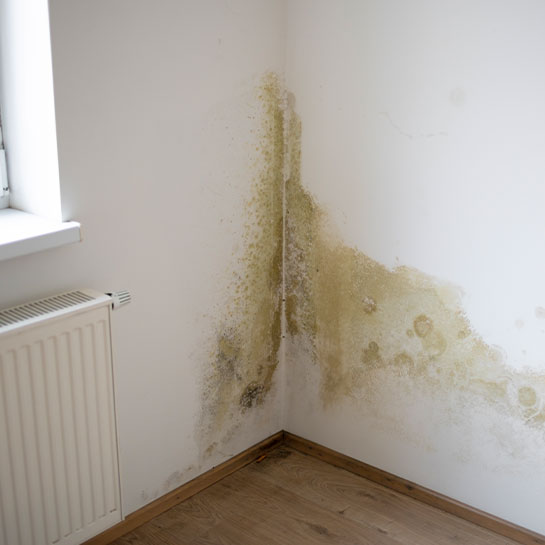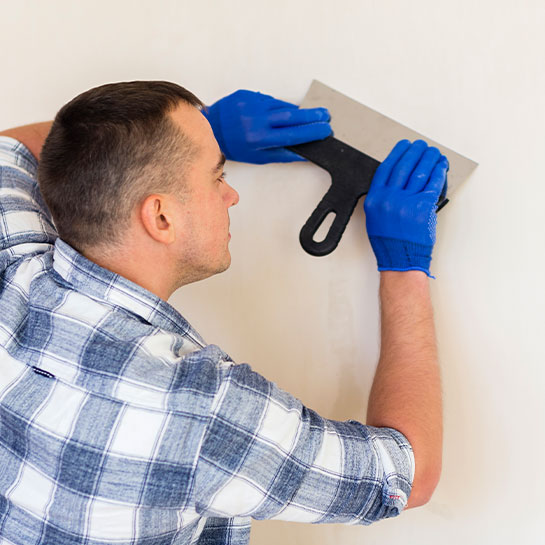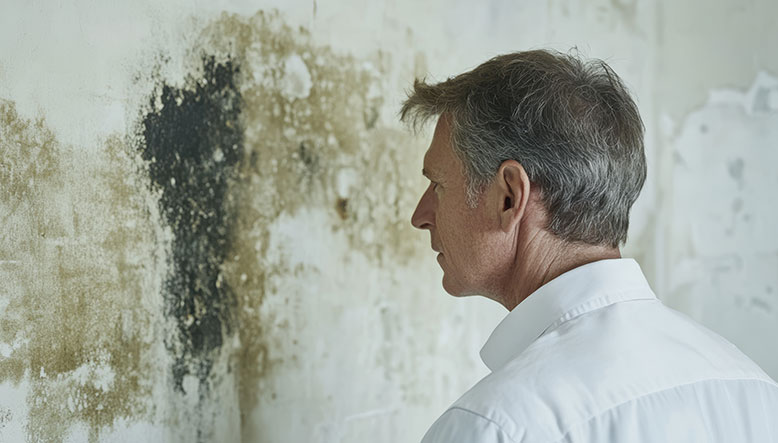Interior wall dampness is not only unsightly, but can also cause structural damage and health problems if not addressed immediately. Detecting and repairing these problems early is crucial to maintaining a healthy and safe home. In this guide, we’ll show you how to identify the different types of dampness and how you can effectively repair each one.
What is dampness in the wall
A wall dampness refers to the accumulation of water or vapor in building materials, which can cause staining, mold and weakening of the structure. This moisture can manifest as dark stains, peeling paint or plaster, and a lingering musty odor. In many cases, these signs indicate a more serious underlying problem that must be properly addressed to prevent further damage.
Dampness can arise due to multiple factors, from insulation problems to internal plumbing failures. Depending on the source and type of moisture, repairs may vary, so it is vital to correctly identify the type before initiating any corrective action.
The consequences of ignoring moisture in interior walls include:
- Structural damage: In the long term, moisture can weaken building materials, such as bricks or concrete.
- Health problems: The presence of mold can cause respiratory problems and allergies, especially in sensitive people.
- Devaluation of the property: A house with visible humidities can lose value in the market.
Main reasons for the appearance of dampness in an interior wall
Identifying the source of the dampness is the first step in solving it. The following are the most common causes of dampness in interior walls:
External leaks
One of the main causes of moisture in interior walls is water seepage from the outside. This occurs when the home’s waterproofing system fails, allowing water from rain or the surrounding soil to penetrate the walls. Cracks in facades or cracks in windows and doors are common points where water can enter.
Condensation
Condensation is the result of the accumulation of water vapor in the air, which upon contact with cold surfaces such as walls, turns into water. This phenomenon is common in poorly ventilated homes or homes with high relative humidity, especially in cold climates or during the winter. Poor ventilation problems and excessive use of heating contribute to the formation of condensation.
Capillarity
Rising damp occurs when water rises from the ground through the pores of building materials, such as bricks or mortar. This type of moisture is most common in first floors or basements, and can cause walls to become damp from the ground up. Its origin usually lies in the lack of a waterproofing barrier between the foundation and the walls of the house.

Plumbing problems
Leaks or breaks in the internal plumbing of the house can also be responsible for dampness in the interior walls. Often, these leaks go unnoticed for a period of time, allowing water to accumulate behind the walls, causing damp stains and possible leaks.
Types of dampness that can appear in your interior wall
There are different types of dampness that can affect interior walls, and each requires a different approach to repair. Here are the most common types and how you can identify them:
Indoor moisture seepage
Moisture seepage occurs when external water penetrates into the interior of the house due to waterproofing failures. It is common in older or poorly maintained homes. This dampness manifests itself as dark stains on the walls, often accompanied by visible mold growth.
How to Identify: Stains usually appear in areas where water can easily enter, such as poorly sealed joints, windows or doors. If these damp spots are ignored, they can spread quickly.
Indoor condensation humidity
Condensation is very common in poorly ventilated homes or homes with high relative humidity. Walls cool and water vapor is deposited on them, creating a thin film of water that, if not dried properly, can develop mold.

How to identify: Small water droplets on wall surfaces, diffuse stains or mold in the corners of rooms. Usually appears in bathrooms, kitchens and other poorly ventilated areas.
Indoor rising damp
Capillarity is the absorption of water from the ground through building materials. It is more common in older homes that lack an adequate barrier between the soil and the walls.
How to identify: Stains starting from the floor and going up the walls, as well as peeling paint or plaster at the base of the walls.
How to repair a damp interior wall
The method of repair will depend on the type of moisture that is affecting your wall. Here are the steps to follow to repair each type of interior wall moisture.
Repair of dampness due to seepage
- Identify the point of water entry: Examine walls and ceilings for cracks, poorly sealed joints or fissures.
- Clean the affected areaRemove any peeling paint or mildew with a spatula.
- Seal cracks and crevices: Use a waterproofing sealant suitable for exteriors or interiors, as needed.
- Apply a waterproofing treatment: After sealing, waterproof the area with a damp-proofing paint or a waterproofing membrane.
Repair of condensation dampness
- Improve ventilation: Ensure that affected rooms have adequate ventilation. Install exhaust fans or dehumidifiers.
- Clean mold: If mold has already appeared, clean it with a mixture of water and bleach, or use a specialized fungicide product.
- Apply damp-proofing paint: After removing the mold, paint the wall with damp-proofing paint to prevent it from reappearing.

Repair of capillary dampness
- Remove affected coating: Scrape off damaged paint or plaster.
- Applying chemical injections: These water-repellent substances are injected into the walls to form a barrier against rising damp.
- Repair the coating: After applying the injections, recoat the walls with plaster or damp-proof paint.
Tips to prevent damp from appearing on the wall
- Ventilate your home daily: Maintain adequate ventilation in all rooms, especially those prone to condensation, such as bathrooms and kitchens.
- Control the temperature: Avoid sudden changes in temperature, maintaining an average temperature of around 21ºC.
- Use dehumidifiers: These devices reduce the relative humidity of the air, preventing the formation of condensation.
- Regularly check the pipes: Regular maintenance of the pipes will help you detect possible leaks before they cause damage.
- Apply waterproofing products: If you live in an area with high humidity or frequent rainfall, apply waterproofing sealants to the exterior walls and foundation of your home.
In conclusion, dampness in interior walls can become a serious problem if not detected and repaired in time. Whether it is due to seepage, condensation or capillarity, it is essential to treat the underlying cause and follow the correct steps to prevent the problem from recurring. If you are unable to repair the damp on your own, it is always advisable to enlist the help of a specialized professional to ensure an effective and long-lasting solution.


